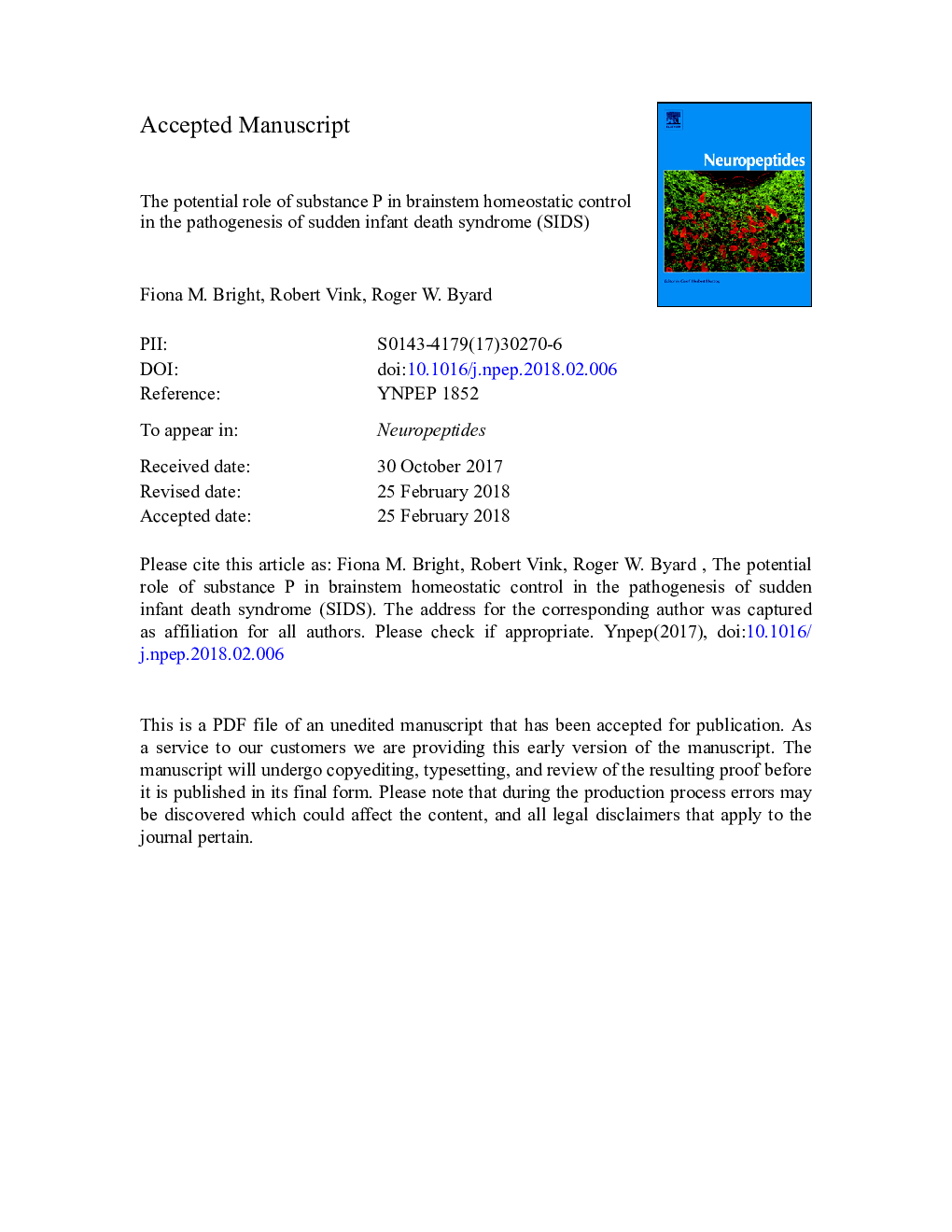| Article ID | Journal | Published Year | Pages | File Type |
|---|---|---|---|---|
| 8633186 | Neuropeptides | 2018 | 23 Pages |
Abstract
Victims of sudden infant death syndrome (SIDS) are believed to have an underlying dysfunction in medullary homeostatic control that impairs critical responses to life threatening challenges such as hypoxia, hypercarbia and asphyxia, often during a sleep period. This failure is thought to result from abnormalities in a network of neural pathways in the medulla oblongata that control respiration, chemosensitivity, autonomic function and arousal. Studies have mainly focused on the role of serotonin, 5-hydroxytyptamine (5HT), although the neuropeptide substance P (SP) has also been shown to play an integral role in the modulation of medullary homeostatic function, often in conjunction with 5-HT. Actions of SP include regulation of respiratory rhythm generation, integration of cardiovascular control, modulation of the baroreceptor reflex and mediation of the chemoreceptor reflex in response to hypoxia. Abnormalities in SP neurotransmission may, therefore, also play a significant role in homeostatic dysfunction of the neurotransmitter network in SIDS. This review focuses on the pathways within the medulla involving SP and its tachykinin NK1 receptor, their potential relationship with the medullary 5-HT system, and possible involvement in the pathogenesis of SIDS.
Keywords
Related Topics
Life Sciences
Biochemistry, Genetics and Molecular Biology
Endocrinology
Authors
Fiona M. Bright, Robert Vink, Roger W. Byard,
